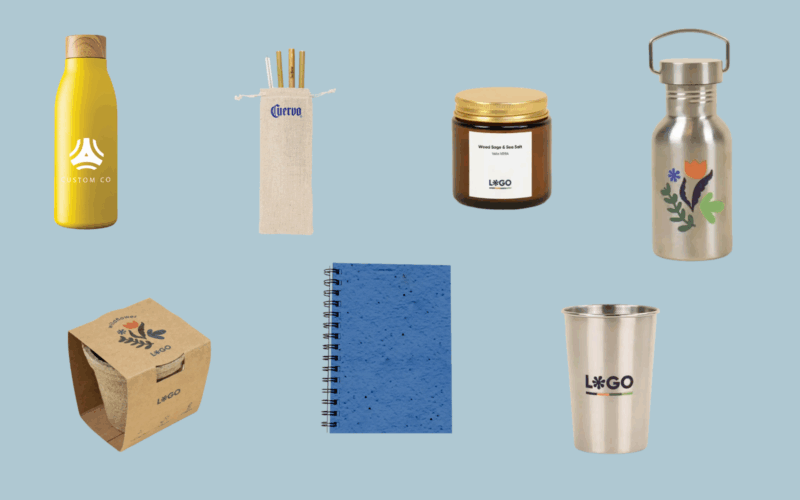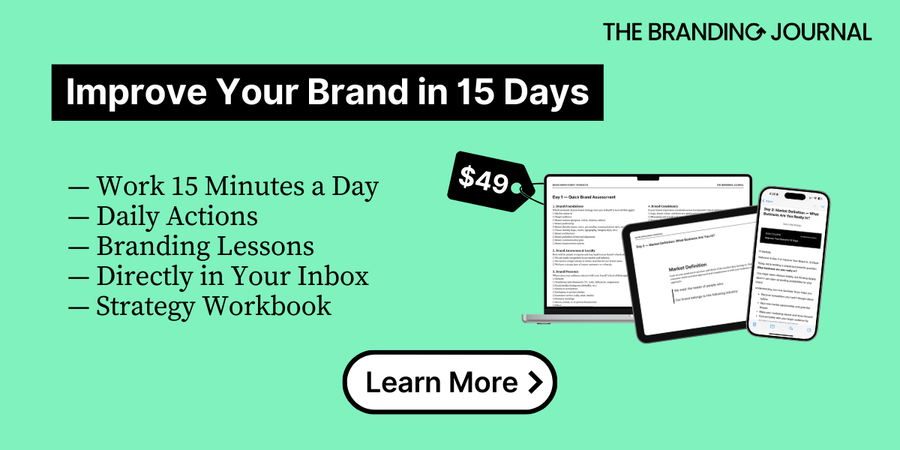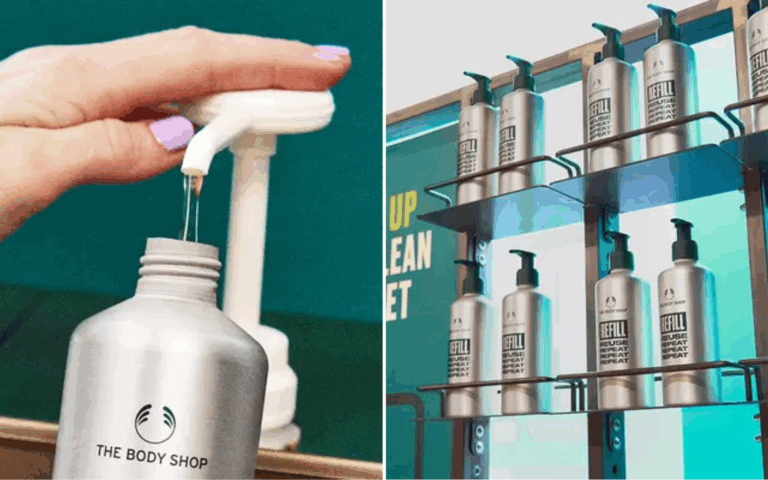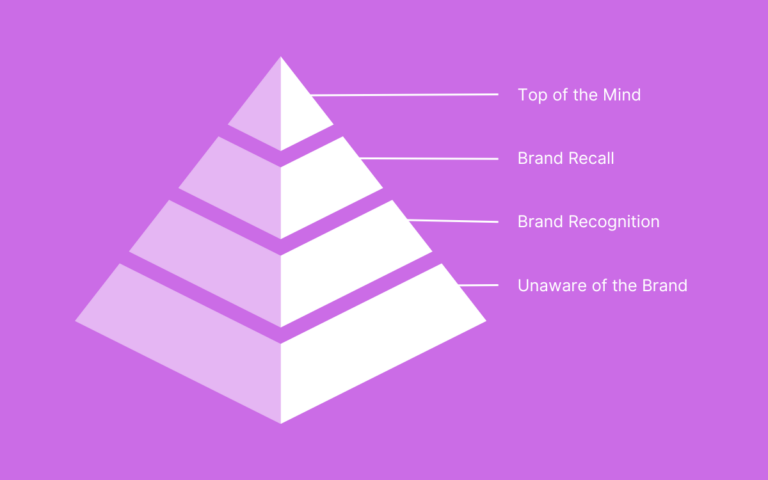The global promotional products market keeps growing. It was $84.1 billion in 2021, is expected to reach $97.4 billion by 2025, and could hit $130.8 billion by 2033, growing at a rate of 3.75% per year. Companies spend heavily on these products to increase brand awareness, strengthen customer loyalty, and make a lasting impression in today’s competitive market.
But this growth comes with a problem. Many traditional promotional items, like plastic pens, single-use keychains, or cheap apparel, often end up forgotten in a drawer, hanging unused on a hook, or thrown away. They generate a lot of waste and end up damaging the environment.
This is the paradox of free branded merchandise. It is meant to keep your brand in people’s minds, but too often it is unused, forgotten, or even thrown into a landfill.
So how can we rethink this culture of stuff? How can we move from throwaway swag to items that are meaningful, useful, and better for the planet?
We’ve prepared a short step-by-step guide to help you navigate the ethical branded merch world, with all the benefits and limitations it can have.
Proven Systems for Business Owners, Marketers, and Agencies
→ Our mini-course helps you audit and refine an existing brand in 15 days, just 15 minutes a day.
→ The Ultimate Brand Building System is your step-by-step blueprint to building and scaling powerful brands from scratch.
Table of Contents
Step 1: Pause and Think About Your Brand’s Goals
Giving out branded merchandise at events or to thank employees, partners, or clients has become so common that most of us do it without a second thought.
Pens, USB sticks, notebooks, and tote bags are usually the first things brands reach for. They are cheap, easy to brand, and people are generally happy to receive them. But are they really the most valuable items you could offer? Do they create lasting brand awareness? How long will people actually keep them? Will they be treasured in the long term?
These are the questions every brand owner should ask before creating any branded merchandise.
So, before you include branded merch in your marketing strategy, pause for a second, and ask yourself:
- What is the exact goal of this merchandise?
- Could the same goal be achieved in another way?
- Will the item actually be used and appreciated in the long term?
- How can I minimize the impact on people and the environment?
Taking a moment to answer these questions can save money, reduce waste, and ensure your merchandise is actually useful and serves your brand.
Step 2: Consider Refusing Branded Merch and Gifting Non-Physical Items Instead

The most sustainable option is not to offer merchandise at all.
This may sound like an obvious statement, but it is important to remind ourselves. Sometimes, we think that choosing “eco-friendly” alternatives will do the job, but eco-friendly alternatives also have some kind of ecological impact.
Here, the idea is to question our culture of owning things altogether. And coming up with something even better.
This doesn’t mean your brand cannot delight its clients, partners, and employees in other ways.
Actually, by choosing to refuse branded merch, you will start thinking outside the box and come up with alternatives that will make your brand stand out.
Here are some ideas to get you started:
Experiences
Offering memorable experiences that connect to your brand’s universe and values is a powerful way to delight stakeholders and leave a lasting impression. For example:
- A film or media brand could offer free tickets to an international film festival, a concert, or a theatre show.
- A wellness brand might give a free class or limited memberships to a local gym, yoga studio, or mindfulness app.
- A food and beverage company could host an exclusive tasting event, offer a cooking class, or provide vouchers for a partner café/restaurant/bar.
- A tech brand might offer early access to a new app feature or a workshop on digital creativity.
- A travel company could gift guided local tours or eco-friendly weekend getaways.
- A fashion brand might invite clients to a behind-the-scenes atelier visit or a personal styling session.
- A publishing or education company could provide free access to curated online courses, audiobooks, or lectures.
What’s important is to offer an experience that connects back to your brand’s identity, your audience, and feels too meaningful to forget. It’s also a perfect opportunity to stay in contact with those potential clients and make them part of your brand’s world. The more meaningful and long-term the experience, the more positively people will remember your brand.
Expertise
Another way to replace physical merchandise is by sharing your brand’s expertise. Instead of producing more “stuff,” you can offer services, skills, or personalized advice that people will actually value. These gifts feel authentic, relevant, and memorable because they come from what you already do best. Plus, it’s another way to convince people that your brand can be trusted and is an expert in its field.
Here are some examples:
- A beauty salon could offer a free hair or skin consultation with tailored tips that clients can use right away.
- A professional services firm might gift a short strategy session, helping businesses solve a specific challenge in marketing, design, or finance.
- A fitness brand could provide a customized workout plan or a free trial personal training session.
- A toy brand could host a playtime session for parents and kids.
- A SaaS business could offer early access to premium features or a one-on-one onboarding session to help users get the most out of the platform.
- A thrift shop might offer creative sewing or tailoring classes to help people personalize their clothes.
For small brands, these don’t need to be big or costly. Even a 15-minute consultation, a short checklist, or a trial service can feel like a nice gift. What matters is that it’s helpful and clearly tied to your brand’s expertise.
Charity donations
Instead of donating physical items, why not donate to a charity in someone’s name?
You can make the process engaging by inviting people to take a small action, like signing up on a platform or choosing between a few causes. They’ll then receive a confirmation that a donation has been made in their name, fully funded by your brand.
The beauty of this approach is flexibility: you can decide in advance how much you want to give and how many donations you can support, making it easy to adapt to your budget. The cause should resonate with your brand’s purpose and values. This kind of gesture is quite rare and will make your brand’s purpose more tangible and visible.
Digital gifts
The last idea for non-physical gifts is to offer digital products instead. Of course, the digital world can have an ecological impact too, but it’s often less significant than the impact of disposable merchandise.
You could share a free e-book, audiobook, online course, or downloadable template. Or get creative! A secret podcast episode, a mini brand zine, or exclusive digital content can make people feel special and connected to your brand.
Digital gifts leave a good impression without creating clutter, and you can adapt them to fit almost any budget.
Step 3: Make Your Merchandise Meaningful
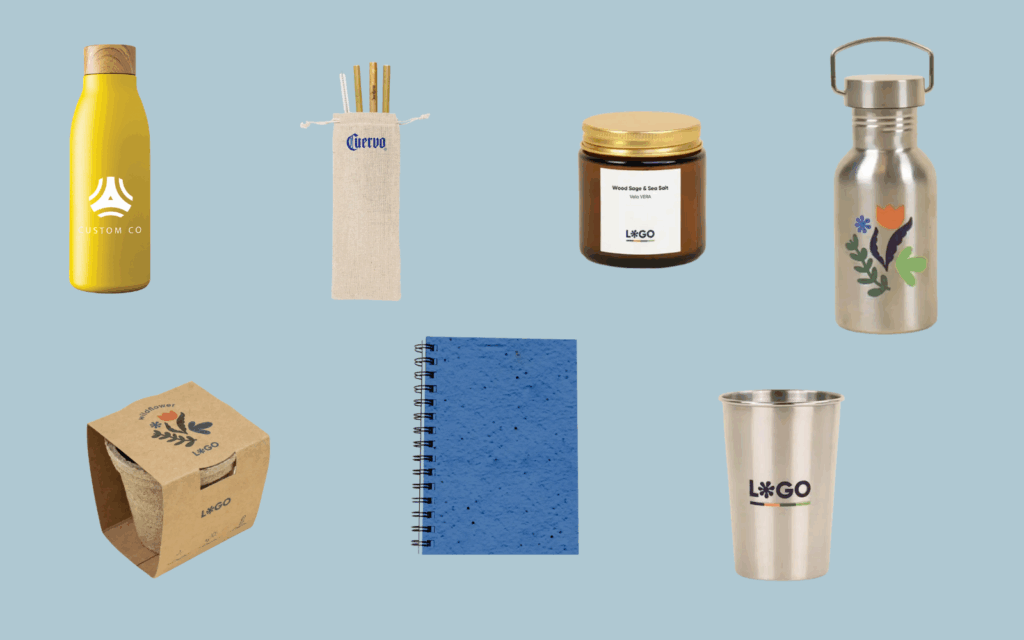
If, after reflecting on steps 1 and 2, you decide merchandise is the right choice, try to make it something people will actually value.
A helpful mindset shift is to think of your merch less as a “giveaway” and more as a gift. Giveaways are generic and standard. But gifts feel thoughtful and special.
Gift criteria
Here are some principles to guide your choices:
- Relevant: The item should fit both your audience’s interests and your brand’s universe. For example, a wellness brand could give a candle or a journaling notebook. And a sports brand might offer durable gear like water bottles or an upcycled yoga mat.
- Beautiful: It’s very important to make it something people will want to keep. Avoid over-branding the item: place your logo subtly, like on a label or the back of the item. You can also feature an inspiring quote or invest in a unique, limited-edition design that turns the item into something people enjoy using or displaying. Avoid using temporary elements (such as the event’s date). The idea is to create something that will be kept and cherished in the long term.
- Durable and sustainable: Try to focus on quality and longevity. Choose natural, long-lasting materials that are easy to recycle or compost, like stainless steel or natural fabrics. Prioritize fair trade, organic, upcycled, or locally made options whenever possible. Refillable or repairable items also work well — they reduce waste and show that your brand cares about creating something people will actually use and treasure.
- Local: Partner with local makers to reduce shipping costs and support your community. For example, why not donate a branded mug carefully designed by a local ceramist? Or a t-shirt produced by a small sustainable brand from your brand’s city?
Last but not least, think of things people will actually use again and again, like stainless steel food containers, reusable cotton shopping bags, or reusable coffee cups.
These gifts not only get used, they can also gently encourage better everyday habits. Plus, because people keep them for a long time, your brand will remain subtly present in their minds, helping to strengthen brand awareness.
Examples by category
Here are some ideas by category to help you choose merchandise that truly adds value and promotes sustainable behaviours:
Food and Beverage
- Stainless steel bottles or airtight containers
- Reusable coffee cups or bottles made from natural or recycled materials
- Tote bags or grocery bags made from upcycled fabrics
- Durable recycled glass containers for storing grains, nuts, or spices, encouraging a refill-and-reuse habit.
Wellness and Cosmetics
- Natural, solid soap or shampoo bars (you could stamp your brand’s name on the solid bar, here’s an example)
- Handmade, refillable candles
- Bamboo toothbrushes or solid toothpaste tabs
- Refillable makeup or deodorant
Stationery
- Notebooks made from recycled paper with refillable inserts
- Seed-paper bookmarks, pencils, or cards that can be planted
- Refillable stainless steel pens/fountain pens
Apparel
- Organic and locally made T-shirts and accessories designed to last (best with a minimal, timeless design)
Home Décor
- Locally handcrafted, durable items from natural or recycled materials
- Refillable or compostable candles
Tech
- Solar phone chargers
- Accessories made from recycled or sustainable materials (cable organizers, laptop sleeves)
Giving process
And to finish this list, two important notes:
- Ask before you give. Give people an option to decline the gift if they feel like they don’t need it. For example, by asking before adding items to their goodie bag, or by adding an option to refuse it on your website. This is important, not only to avoid unnecessary waste but also to allow you to reorient the gift towards someone who will need and appreciate it.
- Don’t neglect the packaging! To keep your gift in line with your sustainability efforts, always aim for minimal, compostable, or recyclable packaging that is plastic-free.
Step 4: Choose Your Partners Wisely
As mentioned earlier, the ideal thing to do is to work with local suppliers and partners to produce the branded merchandise you will offer. Local ceramists, artisans, or suppliers can transform your gifts into something truly special and personalize them to your exact needs as well.
If you feel, however, that working with local partners is currently not an option for you, then we recommend working with merchandise suppliers that focus on sustainability and ethical practices.
We’ve done a little research for you, and although we haven’t tested these platforms and cannot guarantee that their offering is 100% ethical, they are a good place to start with and that you can further explore:
- Loop & Tie (Mainly in the U.S.)
- Ethical Swag (North America)
- EcoBranded (U.K)
- Merchgirls (Australia)
- Sheedo Studio (Based in Spain, Worldwide Shipping)
- Boxaroo – Eco Swag Section (Worldwide)
Final thoughts
Rethinking branded merchandise means creating items that actually matter and that are kind to the planet. The best option is to skip merch altogether or replace it with meaningful experiences.
If you do decide to give physical items, focus on gifts people will truly use, remember, and cherish over time. When merchandise is treated as a real gift that is durable, useful, and beautiful, it becomes part of someone’s daily life. And instead of adding clutter, your brand becomes a positive memory.
References
- Cognitive Market Research (2022). The global Promotional Products market size will be USD 26514.2 million in 2024. [online] Cognitive Market Research. Available at: https://www.cognitivemarketresearch.com/promotional-products-market-report [Accessed 26 Sep. 2025].
- Brand The Change. (n.d.). Seven Tips to Make Your Brand Merchandise More Sustainable. [online] Available at: https://brandthechange.org/blog/tips-sustainable-promotional-material-brand




